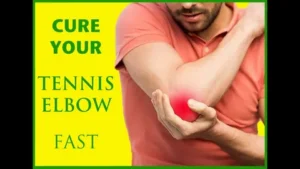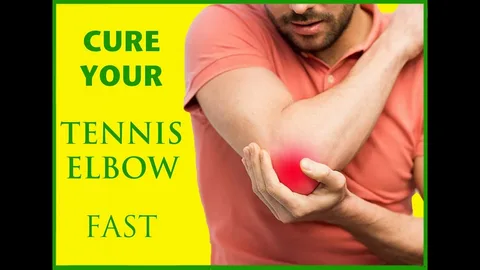How to Heal Tennis Elbow: A Complete Guide to Relief and Recovery
How to Heal Tennis Elbow: A Complete Guide

Tennis elbow can be a real pain – literally! Caused by repetitive stress, this condition isn’t just a problem for athletes; anyone can develop it. Knowing how to heal tennis elbow can help you get back to your regular activities without the lingering ache. This guide covers everything you need to know about relieving and healing tennis elbow, from at-home remedies to professional treatments. Let’s dive in and take a closer look at how you can make that pain a thing of the past.
What is Tennis Elbow?
Tennis elbow, or lateral epicondylitis, is a painful condition where the outer elbow becomes inflamed. This inflammation affects the tendons that connect your forearm muscles to the bony part of your elbow, leading to soreness and tenderness that can disrupt everyday activities.
What Causes Tennis Elbow?
Most cases of tennis elbow result from repetitive motions, such as gripping or lifting. This puts excessive strain on the elbow tendons, leading to small tears and inflammation. Risk factors include engaging in activities that require repetitive arm movements, like tennis (hence the name!), painting, or even typing.
How to Know if You Have Tennis Elbow
If you’re dealing with persistent pain in your elbow or forearm, especially when lifting or gripping objects, you might be facing tennis elbow. Other telltale signs include pain that radiates down your forearm and worsens with certain wrist movements.
Why Tennis Elbow Needs Proper Care
Left untreated, tennis elbow can lead to weakened forearm muscles and a limited range of motion. Ignoring the pain may cause it to become chronic, making recovery a longer and more challenging process. Proper care ensures you avoid these complications.
Immediate Remedies for Tennis Elbow Pain
Start with these quick fixes to help ease the pain:
Ice Packs: Apply ice for 15-20 minutes several times daily to reduce inflammation.
Rest: Avoid activities that exacerbate pain to give your elbow a chance to heal.
Anti-inflammatory Medication: Over-the-counter options can help reduce pain and swelling.
Home Treatments for How to Heal Tennis Elbow
For those dealing with mild pain, home remedies can be highly effective:
Gentle Stretches: Start with gentle forearm stretches to improve flexibility.
Compression: Using a compression band can support the injured area and reduce strain.
Support Techniques: Try to use proper techniques when lifting or carrying objects.
Exercises to Strengthen and Heal Tennis Elbow
Strengthening exercises are crucial for long-term recovery:
Forearm Stretches: Stretch your forearm by extending your arm and pulling your fingers back gently.
Wrist Flexor Exercises: Hold a light weight in your hand, palm facing up, and slowly lift and lower it.
Wrist Extensor Exercises: With your palm facing down, lift and lower the weight to work your forearm extensors.
Lifestyle Adjustments to Prevent Tennis Elbow Recurrence
Preventing a tennis elbow flare-up means making a few lifestyle changes:
Ergonomics: Ensure your workspace is set up to minimize strain on your arms.
Proper Lifting Techniques: Avoid heavy lifting with poor form, which can increase stress on your elbow.
Activity Modification: Avoid repetitive motions when possible, or take breaks to relieve stress on your elbow.
Professional Treatments for Advanced Cases
If home remedies aren’t enough, professional treatments may help:
Physical Therapy: A therapist can guide you through specific exercises to strengthen your elbow.
Cortisone Injections: These can provide temporary pain relief for severe cases.
Surgical Options: Surgery is rarely necessary, but it may be recommended in chronic, resistant cases.
When to See a Doctor
If your symptoms persist despite at-home treatments, it’s time to see a doctor. You should also seek professional help if you experience severe pain, swelling, or loss of motion, as these can indicate a more serious injury.
Alternative Therapies for Tennis Elbow Relief
Some alternative treatments have shown promise for tennis elbow pain:
Acupuncture: This ancient practice may reduce inflammation and provide pain relief.
Massage Therapy: Deep tissue massage around the elbow can improve blood flow and reduce stiffness.
Heat Therapy: Applying heat can ease muscle tightness around the affected area.
Ultrasound Treatment: This therapy uses sound waves to increase blood flow and promote healing.
Using Braces and Supports for Tennis Elbow
Braces can be a game-changer in healing tennis elbow. Look for a brace that provides targeted compression to the forearm muscles and reduces strain on the elbow tendons.
Nutrition Tips to Support Healing
What you eat matters when it comes to healing:
Anti-inflammatory Foods: Incorporate foods like turmeric, ginger, and omega-3-rich fish to reduce inflammation.
Vitamins and Minerals: Ensure you’re getting enough vitamins C and D, as well as zinc and magnesium, which play a role in tissue repair.
FAQs
Can tennis elbow go away on its own?
Mild cases may resolve with rest, but for faster relief and full recovery, a proactive treatment approach is best.
How long does it take to heal tennis elbow?
Recovery time varies, but with proper care, most cases improve within 6-12 weeks.
Is massage good for tennis elbow?
Yes, massage can improve circulation and relieve tension, aiding recovery.
What’s the best brace for tennis elbow?
Look for a brace that offers compression and support without limiting movement.
Should I stop all activities if I have tennis elbow?
You don’t need to stop completely, but avoiding activities that cause pain is essential for healing.
Conclusion
Healing tennis elbow takes time, patience, and consistency. By combining at-home remedies, exercises, and possibly professional guidance, you can reduce pain, build strength, and prevent a recurrence. Remember, taking care of your elbow today means a pain-free tomorrow.
